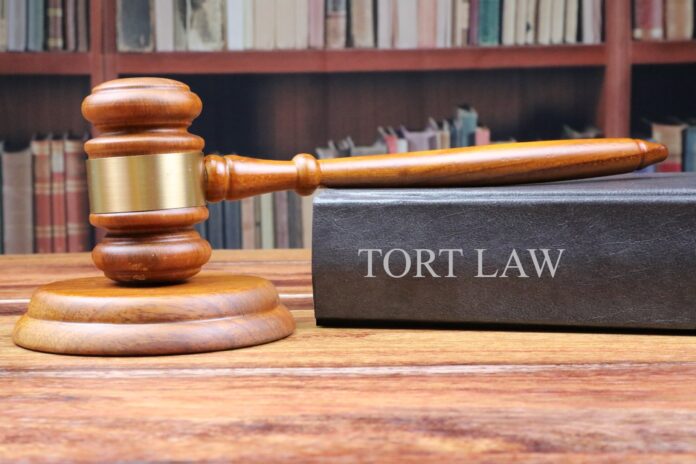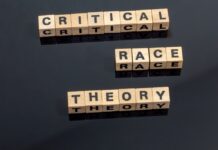This article is written by Satyaki Deb, an LL.M. candidate from the Rajiv Gandhi School of Intellectual Property Law, IIT Kharagpur. In this article, we will discuss what is the US tort of negligence from an analytical perspective, the standard of care, duty of care and remoteness, its elements, the differences between actual causation and proximate causation, the defenses under the US tort of negligence and proof of negligence.
It has been published by Rachit Garg.
Introduction
Prominent legal scholars often say that the law of torts is notoriously hard to define. One of the most accepted definitions is that tort law is the law of civil wrongs. Another class of scholars believes tort law to be a law of remedies. But such definitions have some flaws, and debating which definition is the best is beyond the scope of this article. So it is best to go with the most prominent definition and delve into the nuances of the tort of negligence.
Negligence is a type of tort that is used to hold people liable for their careless actions or omissions. Negligence is a form of civil wrong, and it is the basis of many personal injury suits. In the US, negligence is a tort, and it is the basis of many civil actions. In this article, we will discuss what is the US tort of negligence from an analytical perspective, the standard of care, duty of care and remoteness, its elements, the differences between actual causation and proximate causation, the defenses under the US tort of negligence and proof of negligence.
Analysis of the tort of negligence
The US tort of negligence is a legal doctrine that holds people liable for their careless actions or omissions. The various elements of negligence are duty, injury, breach under the US tort of negligence, actual causation, and proximate causation.
In the US, negligence is a civil wrong, and it is based on the concept of foreseeability. A person is liable for negligence when they fail to act in a reasonable manner and someone else is injured as a result. Negligence can be intentional or unintentional, and a person can be liable for negligence even if they did not intend to cause harm. The following headings will take the reader into the finer facets of the tort of negligence from an analytical perspective.
Nature of wrongdoing: differences between torts of trespass and negligence
It is one of the most confusing concepts in tort law and is best understood with an illustration. When A is using B’s property without B’s permission, then to determine the tort, the intent of A becomes significant in determining the nature of wrongdoing or tort. So, if A uses B’s property without B’s permission for A’s own purposes, it shall be the tort of negligence. On the contrary, if A is going about his business and ends up using B’s property without any such intention, then it shall constitute the tort of negligence. Thus, if one party, for his own purpose, appropriates the other party’s property without his permission in furtherance of his purpose, it is a tort of trespass. But if the tortfeasor, while pursuing his own purpose, ends up interfering with the victim’s purpose by inadvertently (i.e., without intent) using up the victim’s property and preventing or encumbering the victim from carrying out his purpose, then it shall be a tort of negligence. So, the main difference is the type of wrongdoing and how liability is set up as a result.
Another illustration will make the fine difference in the nature of wrongdoing clearer.
If X while driving his car bumps into Y’s car on purpose, it shall be a tort of trespass as X while carrying out his purpose used Y’s car in furtherance of such purpose without Y’s permission. But if X bumps into Y’s car without any intent to do so because he is late for his office, then it shall be a tort of negligence as while carrying out his own purpose, i.e., to reach the office fast, Y ended up hitting or using X’s car. In other words, making contact with X’s car was not Y’s purpose.
The crucial element of intent to determine the nature of the wrongdoing can also be verified from the presence or absence of recklessness. Recklessness is a prime component of the tort of trespass but irrelevant in the tort of negligence. This is because being reckless is a state of mind of the tortfeasor that demonstrates his awareness regarding his intent or choice to put another person’s property at risk. On the contrary, such is not the case with negligence because, in this wrongdoing, the interference is inadvertent and does not involve any choice or intention of the tortfeasor to cause such interference to the victim’s property.
Factual causation and loss
Besides the presence or absence of intent in the mind of the defendant, another pertinent distinction is the presence or absence of damage suffered by the plaintiff, which separates the tort of trespass from the tort of negligence. In other words, for the tort of trespass, proof of damage is unnecessary, but for the tort of negligence, proof of damage is a must. If, on the street, you are accidentally pushed aside by someone, it shall constitute a tort of negligence only if you suffer some damage, i.e., only if your purpose is encumbered by the defendant’s action of pushing you accidentally. Otherwise, if you are not constrained in a manner that hinders your purpose, mere pushing will not be actionable under the tort of negligence.
From the above discussions, it is becoming increasingly clear that this “purpose” is very important, as it is crucial to see if the defendant has hindered the plaintiff’s purpose. So, this “purpose” is generally given a very wide interpretation. The broad concept of purpose in the scenario of the tort of negligence can be better explained with the following illustrations:
Illustration (i): C has bought a clock and has strung it up on the wall. D negligently strikes it down from the wall. The clock is still functioning, but its paintwork got a few scratches. Here, C does not suffer any damage, as C’s purpose of watching time has not been hindered by the negligent act of D. So, D has not committed tort of negligence on C.
Illustration (ii): C has bought a new car. He already has an old but functional car in his garage. C only wants to drive his new car and is determined never to use his old car again. D negligently destroys the driveability of C’s old car by dropping acid on its bonnet. Here, D shall be guilty of negligence because D impaired C’s purpose of driving the old car in the relevant sense even though, in reality, C may not drive it again. So, the point that these illustrations aim to drive home is that the purpose shall be that the plaintiff can relevantly have and not merely the purpose the plaintiff chooses to pursue.
Another pertinent nuance exists, and this facet of damage shall highlight the intricacies of the tort of negligence in a finer sense. Only that loss shall be considered for which the plaintiff had some sort of entitlement. In other words, the tort of negligence can be committed only if the plaintiff was entitled to the means of which the defendant deprived him. The following illustrations will clarify this nuance further:
Illustration (iii): In the first case, A cuts the power cable to B’s TV set negligently thereby preventing B from watching his TV. In the second case, A negligently cuts the power cable of the electric supplier C, who supplies electricity to B’s house. In this second case, the power cable that was cut belonged to C and not B, though in effect, B failed to watch TV. In the first case, A has done tort of negligence to B by preventing B from realizing his purpose but in the second case, B did not own the power cable of C and so B had no entitlement to C’s power cable directly. Thus, in the second case, A will have committed a tort of negligence only against C and not against B. Hence, it can be stated that pure and relational economic losses are not recoverable under the tort of negligence, as held in various cases like Robins Dry Dock & Repair Co. v. Flint (1927), Spartan Steel & Alloys Ltd v. Martin & Co (Contractors) Ltd (1973), Murphy v. Brentwood District Council (1991), etc.
Standard of care
The following points will briefly discuss the standard of care in conjunction with the tort of negligence, first from a negative perspective and then from a positive perspective of standard of care:
The basis of fault standard
It has been portrayed before how the defendant, while pursuing his own purpose, hinders the purpose of the plaintiff (without intent), causing damage to the plaintiff, and this constitutes the tort of negligence. But it is often seen in cases related to the tort of negligence that if the defendant is stopped from pursuing his purpose to protect the purpose of the plaintiff, then the defendant ends up suffering because his own purpose got hindered. This brings us to the fact that, usually, the interests of the parties are symmetrical in nature, which leads us to question when one person is entitled to pursue his purposes at the expense of another. So, logically and from the point of equity, both parties must enjoy equal and maximum freedom, and to this end, both parties have the duty to exercise the standard of care of an ordinary reasonable person or the law of negligence’s objective standard of care. The subsequent discussion aims to shed further light on this symmetrical standard of care nuance.
In the case of Vaughan v. Menlove (1837), when the defendant had built a haystack next to the plaintiff’s barn and the defendant’s haystack caught fire, destroying both the haystack and barn, the Court insisted on judging the defendant from the perspective of an ordinary reasonable man with an objective perspective, indifferent to the personal perspectives of the parties. This approach respects the equal and maximum freedom of both parties.
Likewise, the peculiarities of the plaintiff are irrelevant too under the tort of negligence. In the case of Rogers v. Elliott (1888), the plaintiff lived close to the church of the defendant. The plaintiff went into convulsions every time the church bell was rung because of some peculiarities of his own. The plaintiff alleged that under these circumstances, the ringing of church bells should constitute a tort of negligence. But the courts ruled in favor of the defendant because otherwise, the defendant would have been strictly liable for the mere causation of injury. In other words, the defendant was held not liable under the tort of negligence, as an ordinary, reasonable man would not have been affected by the ringing of bells.
Despite the apparent risk of reiteration, a landmark case in this regard simply cannot be left out, for the same will magnify the nuance herein more precisely. In the case of Bolam v. Friern Hospital Management Committee (1957), the plaintiff had agreed to undergo a medical operation, and the surgeon allegedly did the operation poorly, resulting in the plaintiff’s injury. So, here, should the standard be that of an ordinary, reasonable person or an ordinary, reasonable surgeon? If the impugned surgeon’s conduct is compared to that of an ordinary reasonable person, then she is not at fault. But if she is compared with an ordinary, reasonable surgeon, then only the impugned surgeon can be truly judged with regards to being negligent or not. The scale from an ordinary, reasonable person to an ordinary, reasonable surgeon shifts because, here, the engagement between the patient and the surgeon happened only because the surgeon represented herself to possess some special skill beyond that of an ordinary, reasonable person.
Reasonable care and remoteness
The above discussions may make one ponder if the individual peculiarities of the parties are irrelevant, then how will the courts determine whether the defendant was negligent? The following discussion on the positive side of the standard of care will aim to answer the same, firstly from a UK (Commonwealth law) perspective and secondly from the US perspective.
In the famous Wagon Mound (No.2) case, Lord Reid held that the negligence of the defendant should be determined based on the degree of risk she created. This level of risk should be determined by the likelihood of the risk materializing as well as the seriousness of the consequences in the event the risk materializes. Lord Reich went ahead to differentiate between fantastic or far-fetched risks and real risks. In his Lordship’s opinion, a defendant cannot be held liable for fantastic or far-fetched risks. In other words, only the real risks are actionable against the defendant. This brings us to the concept of “remoteness,” where remote, far-fetched or fantastic risks are not actionable.
His Lordship further divided real risk into two sub-categories, viz- small risks and substantial risks. A defendant shall no doubt be responsible for any substantial risk caused. But in cases of small risks, the defendant is negligent unless the burden of eliminating the risk is high.
In the US, Learned Hand J., in the case of United States v. Carroll Towing (1947), propounded a formula to determine the negligence of the defendant. The elements of the formula are, viz-
- The probability of the risk materializing (P).
- The seriousness of the risk if it materializes (L).
- The burden of eliminating the risk (B).
The formula to determine negligence in the US is:- B<PL (Hand’s Formula). In other words, the defendant shall be liable if he creates risk where the probability of the risk materializing (P) multiplied by the seriousness of the risk if it materializes (L) is greater than the burden of eliminating the risk (B). Thus, if B<PL then it would have been efficient (in the economic sense) for the defendant to have prevented the risk from materializing. Here, if the defendant fails to be so efficient, then he shall be liable because the expected social cost of the accident was less than the expected social cost of the precautions to prevent the accident. This level of efficiency or precautions that a defendant needs to exercise so that B≥ PL is the standard of reasonable care. And based on the foregoing discussions, it is stated that this standard of care is objective in nature.
Duty of Care
The duty of care under the topic of the tort of negligence is best explained with the aid of two landmark cases in this regard, viz- Donoghue v. Stevenson (1932) and Palsgraf v. Long Island Railroad Co. (1928).
In Donoghue v. Stevenson (1932), the defendant made ginger beer and was irresponsible regarding its drinkability. The plaintiff drank the same, was injured, and later found a snail in it. It was held that the defendant owed a duty of care to the plaintiff and was guilty of negligence. The defendant’s irresponsible actions posed a risk, and that risk materialized, causing a serious consequence like injury to the plaintiff.
The Palsgraf case was different, though. Here, the persons for whom the defendant was responsible had pushed a man into a train that was moving out of the station. That man was carrying firecrackers, and upon being pushed, the box of firecrackers he was carrying fell to the floor and exploded. This caused scales at the far end of the platform to fall down and injure the plaintiff. The defendant was held not guilty in this case as the injury was far-reaching or fantastic in nature and not real. In other words, the defendants, though they had acted negligently, were held not guilty because they owed no duty of care to the plaintiff at the far end of the platform. The duty of care cannot be remote in nature, or else it would be too harsh on the defendant.
Elements of tort of negligence
The foregoing discussions have brought before us the elements of the tort of negligence, which are simplified and portrayed below:-
Duty and Injury
The first element of negligence is duty. Under the US tort of negligence, a person has a duty to act in a reasonable manner and to take reasonable precautions to prevent harm to others. This duty is based on the concept of foreseeability. If a person fails to act in a reasonable manner and someone else is injured as a result, then that person may be liable for negligence.
The second element of negligence is injury. To be liable for negligence, a person must have caused injury to another person. The injury must be a direct result of the person’s negligent action or omission. The injury must be more than mere emotional distress, and it must be a physical injury or financial loss.
Breach under the US tort of negligence
The second element of negligence is a breach under the US tort of negligence. A person is liable for negligence if they fail to act in a reasonable manner and someone else is injured as a result. This means that the person must have breached a duty to act in a reasonable manner. To determine if there has been a breach of duty, the court will look at the standard of care that a reasonable person would have exercised in the same circumstances.
The court will also consider factors such as the person’s knowledge, experience, training, and any special circumstances that may have impacted their ability to act in a reasonable manner. If the court finds that the person failed to act in a reasonable manner and someone else was injured as a result, then the person may be liable for negligence.
Actual Causation
The third element of negligence is actual causation. To be liable for negligence, a person must have caused injury to another person. This means that the person’s negligent action or omission must have been the actual cause of the injury. The court will look at the facts of the case to determine if the person’s action or omission was the actual cause of the injury.
If the person’s action or omission was not the actual cause of the injury, then the person may not be liable for negligence. The court will consider factors such as the timing of the action or omission, the nature of the injury, and any intervening forces that may have contributed to the injury.
Proximate Causation
The fourth element of negligence is proximate causation. Proximate causation is a concept that holds people liable for the foreseeable consequences of their actions or omissions. This means that if a person’s action or omission was the foreseeable cause of an injury, then the person may be liable for negligence even if their action or omission was not the actual cause of the injury.
The court will look at the facts of the case to determine if the person’s action or omission was the foreseeable cause of the injury. The court will consider factors such as the nature of the injury, the timing of the action or omission, and any intervening forces that may have contributed to the injury.
Differences between Actual Causation and Proximate Causation
Actual causation and proximate causation are two different concepts under the US tort of negligence. Actual causation is the concept that holds people liable for the direct consequences of their actions or omissions. This means that if a person’s action or omission was the direct cause of an injury, then the person may be liable for negligence.
Proximate causation is a concept that holds people liable for the foreseeable consequences of their actions or omissions. This means that if a person’s action or omission was the foreseeable cause of an injury, then the person may be liable for negligence even if their action or omission was not the actual cause of the injury.
Defenses under the tort of negligence
There are several defenses under the US tort of negligence. These defenses include contributory negligence or comparative fault, illegality, and voluntary assumption of risk.
Contributory negligence is a defense that holds that a person is not liable for negligence if the person who was injured contributed to the injury. This means that if the person who was injured was partially at fault for causing the injury, then the defendant may not be liable for negligence. Some US states, like Alabama, Maryland, North Carolina, etc., prefer the term “comparative negligence” or “comparative fault.” In other words, comparative fault is a defense that holds that a person is not liable for negligence if the person who was injured was partially at fault on his own for causing the injury to himself. Basically, not only the defendant but also the plaintiff were negligent. In such cases, the plaintiff cannot claim full damages from the defendant for negligence. To the extent the defendant was negligent, causing injury to the plaintiff, the courts may award damages to the plaintiff. Relevant case laws in this regard are Davies v. Mann (1842), Butterfield v. Forrester (1809), etc.
Illegality may appear as a complex prima facie defense to the tort of negligence, but in practice, it is very simple. If the defendant negligently hindered the plaintiff from pursuing his illegal purpose, then the plaintiff cannot claim damages for the same. Suppose A negligently drops acid on B’s car, destroying its drivability, but B used such a car for delivering cocaine. B cannot sue A for damages that prevented him from carrying forward his cocaine business, but B can sue A for just the car.
Voluntary assumption of risk is a defense that holds that a person is not liable for negligence if the person who was injured assumed the risk of the injury. This means that if the person who was injured voluntarily accepted the risk of the injury, then the person may not be liable for negligence. This is because, though the defendant may have encumbered the purpose of the plaintiff, the plaintiff here voluntarily shared a purpose with the defendant where risk was an integral element. A relevant case highlighting illegality as a defense to the tort of negligence is Hall v. Herbert (1993).
Proof of negligence
According to the case of Huff v. Austin (1889), the presumption of law is that every person performs his legal duty. So, the plaintiff who is asserting negligence against the defendant has to prove that the defendant was negligent throughout the case, contrary to other cases where the burden of giving evidence may shift from one side to another during the progress of the trial and the plaintiff has to satisfy the judge on the basis of the balance of probabilities.
There is another aspect to how this presumption operates when a contract is broken. For example:- a stage-coach upsets, or a railroad train is suddenly jolted, or a steamship is thrown with extraordinary force against a wharf, or a train is derailed by the obstacles on the track or by defective rails or defective rolling stock, and a passenger is injured. The accident itself affords prima facie evidence of the carrier’s negligence, for he contracted to carry the passengers safely. In the event a servant of the same carrier had been harmed in the same accident then the fact of the accident in itself will not carry any presumption of negligence on the part of the employer and the victim (employee) would be bound to prove that the employer had been guilty of negligence as held in Patton v. Texas & Pacific Ry. Co. (1901).
The following are the relevant matters of law that are evaluated in a case of negligence:
- All questions of duty- was the duty owed to the plaintiff, was it within the hazard? And the like.
- The standard of care – what is the standard, and is there any evidence of failure to conform to it?
- The remoteness of the damage – whether the damage was too remote and what principles to be applied to determine remoteness of damage, whether any evidence was there for such damage, and whether any recognized heads of damage have not been taken into account.
The following are the pertinent matters of fact that are evaluated in a case of negligence:
- Resolving conflicts in the evidence and determining what the circumstances were and what the parties did.
- Evaluating the conduct of the parties in the light of the facts found and deciding whether it constituted a failure to take care, having regard to the standard of care required of the defendant.
- Deciding in the light of the facts found whether the damage was caused by the defendant and the extent of the damage, and the assessment of the damages.
Res Ipsa Loquitur
The doctrine of res ipsa loquitur traces its origin back to the landmark case of Byrne v. Boadle (1863) (“The Falling Flour Barrel case”), where Chief Baron Pollock made this Latin remark to an off-hand remark of a counsel, and this was soon elevated to the stature of a principle. In this case, the plaintiff had been injured by a barrel of flour that fell from a window above the defendant’s shop. The defendant did not explain how the accident or incident occurred. The assessor had granted a non-suit. On appeal to the Court of Exchequer, the defendant’s counsel contended that the plaintiff was bound to give affirmative proof of negligence, and there was no such evidence unless the occurrence is of itself evidence of negligence. In response, Pollock CB said that “there are certain cases of which it may be said res ipsa loquitur and this seems one of them…”
The procedural part of this doctrine was beautifully laid down by Erle CJ in Scott v. London & St Katherine Docks Co (1865) in the following words:- “There must be reasonable evidence of negligence. But where the thing is shown to be under the management of the defendant or his servants, and the accident is such as in the ordinary circumstances does not happen if those who have the management use proper care, it affords reasonable evidence, in the absence of explanation by the defendants, that the accident arose from want of care.”
But it is pertinent to note that this principle of “the thing speaks for itself” about negligence is to be applied rarely and not routinely. This is because of the logical reason that if every time an injury in itself, divorced from all its surrounding circumstances spoke of negligence, the same would be grossly unfair on the defendant or the alleged tortfeasor. A plaintiff who shows that he was injured by the falling of a flour barrel on the street from above or by the falling of a toll gate while he was passing underneath the same makes out a prima facie case of negligence, whereas if the plaintiff shows injury by the bursting of a boiler or engine or the bursting of a fly-wheel used by the defendant, etc., he does not make out such a case. This is because the first set of cases affords a just ground for a reasonable inference that, according to ordinary experience, the accident would not have occurred except for want of due care by the defendant, while in the later set, they do not warrant such inferences.
Conclusion
In conclusion, the tort of negligence in the US is a legal doctrine that holds people liable for their careless actions or omissions. Negligence is a tort, and it is the basis of many civil actions. Some of the prime elements of negligence are duty, injury, breach under the US tort of negligence, actual causation, and proximate causation. There are also several defenses under the US tort of negligence, such as contributory negligence or comparative fault, illegality, and voluntary assumption of risk.
If you have been the victim of negligence, it is important to speak with an experienced personal injury attorney as soon as possible because negligence is a serious issue. An attorney can help you understand your rights and help you determine if you have a case.
Frequently Asked Questions (FAQs)
Can I sue for damages if I am partially at fault or negligent?
Generally speaking, the courts will judge what percentage was your fault. This is commonly called comparative negligence. Thereafter, if it is less than 50%, then you will get damages only to the extent the defendant or tortfeasor was at fault. For example: if you are at 25% fault, you will get damages (compensation) to the extent of 75% of your damage.
What do I need to show in court to prove negligence?
In order to prove negligence in court, the following needs to be proven:
- The defendant had a duty to use reasonable care towards you.
- The defendant had breached that duty by acting unreasonably or negligently.
- The defendant had caused you injury by acting unreasonably or negligently.
- The injury caused by the defendant was foreseeable in nature.
Who has the burden of proof to prove negligence in court?
The plaintiff or the alleged victim has the initial duty to prove a prima facie case of negligence against the defendant. Civil cases have the “preponderance of evidence standard” and the same applies to torts. There is no need for a higher burden of “beyond reasonable doubt” as expected in criminal cases.
What is the statute of limitations for negligence claims?
The statute of limitations for negligence claims usually varies from one state to another and is different for private parties and government bodies or agents. For example:- the limitation period for negligence causing personal injury is four years in the State of Nebraska and two years against government bodies or agents. It is always advised that you contact an attorney immediately if you are injured to preserve all your legal rights before they are barred by law.
How can I claim damages for negligence by federal employees?
Under the FTCA, 28 U.S.C. §§ 2671-2680, individuals who are injured or whose property is damaged by the wrongful or negligent act of a federal employee acting within his or her official duties may file a claim with the government for reimbursement for that injury or damage.
References
- https://www.jstor.org/stable/1119989?searchText=US%20tort%20law%20of%20negligence&searchUri=%2Faction%2FdoBasicSearch%3FQuery%3DUS%2Btort%2Blaw%2Bof%2Bnegligence&ab_segments=0%2FSYC-6744_basic_search%2Ftest-1&refreqid=fastly-default%3A1cbbc1d0ca2e9598f84b99068dbce1be
- https://www.jstor.org/stable/1071415?searchText=US%20tort%20law%20of%20negligence&searchUri=%2Faction%2FdoBasicSearch%3FQuery%3DUS%2Btort%2Blaw%2Bof%2Bnegligence&ab_segments=0%2FSYC-6744_basic_search%2Ftest-1&refreqid=fastly-default%3A1cbbc1d0ca2e9598f84b99068dbce1be
- https://www.jstor.org/stable/1336621?searchText=US%20tort%20law%20of%20negligence&searchUri=%2Faction%2FdoBasicSearch%3FQuery%3DUS%2Btort%2Blaw%2Bof%2Bnegligence&ab_segments=0%2FSYC-6744_basic_search%2Ftest-1&refreqid=fastly-default%3A1cbbc1d0ca2e9598f84b99068dbce1be
Students of Lawsikho courses regularly produce writing assignments and work on practical exercises as a part of their coursework and develop themselves in real-life practical skills.
LawSikho has created a telegram group for exchanging legal knowledge, referrals, and various opportunities. You can click on this link and join:
Follow us on Instagram and subscribe to our YouTube channel for more amazing legal content.








